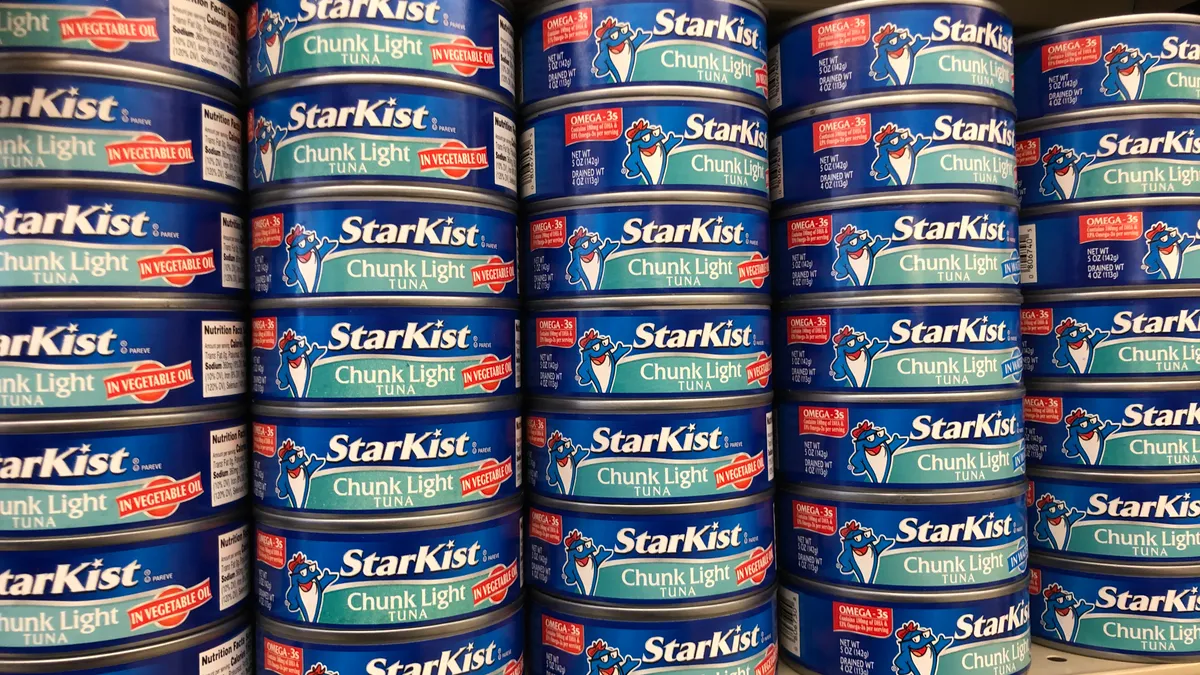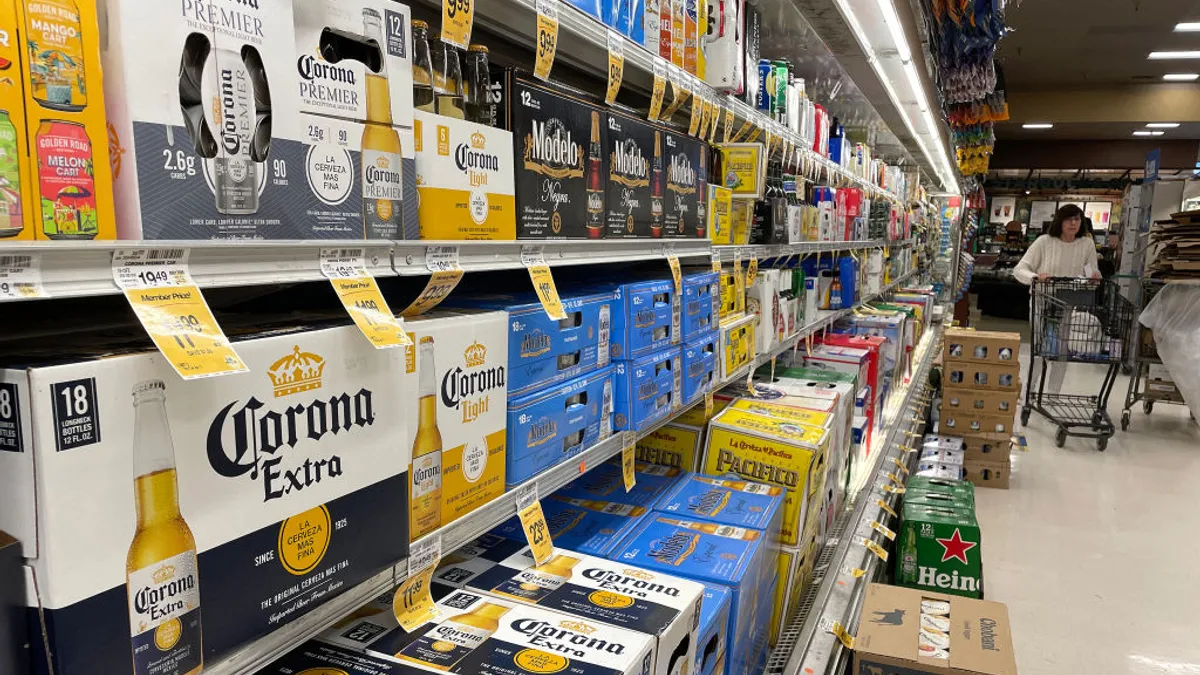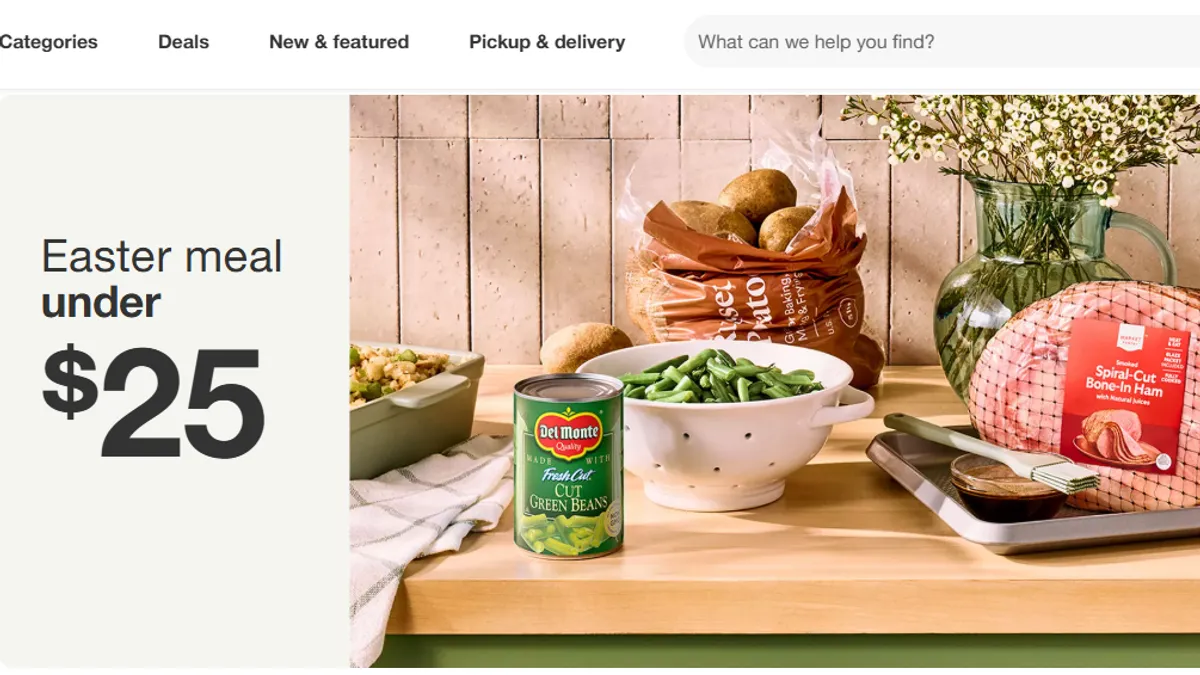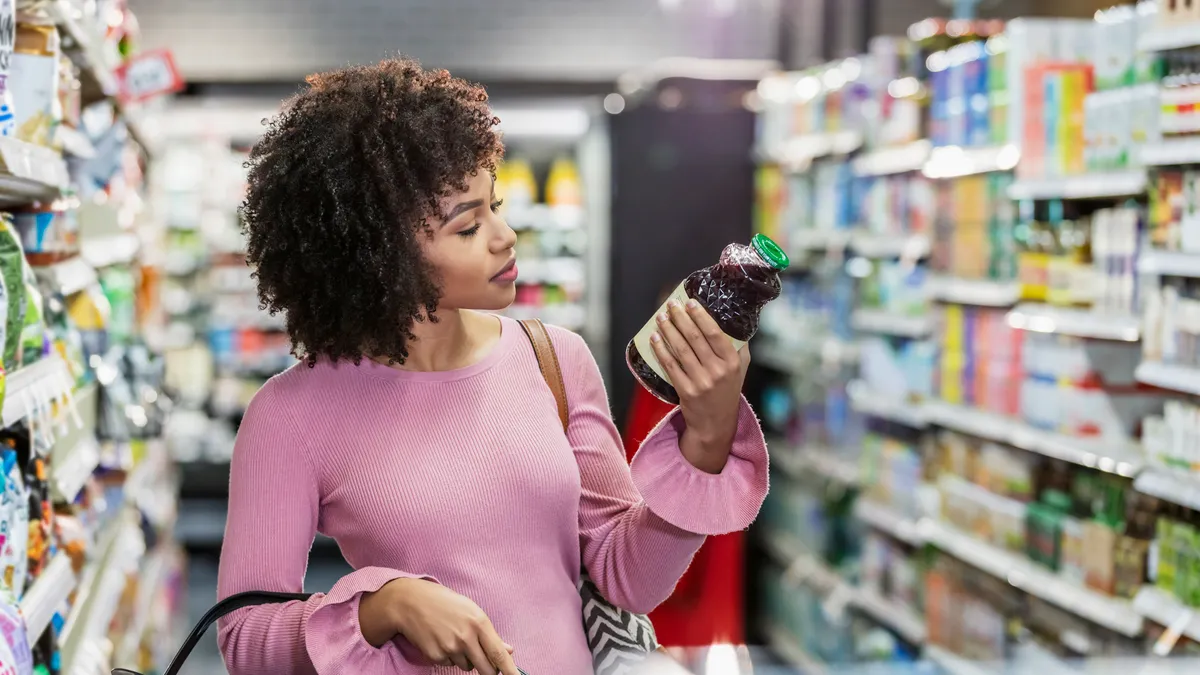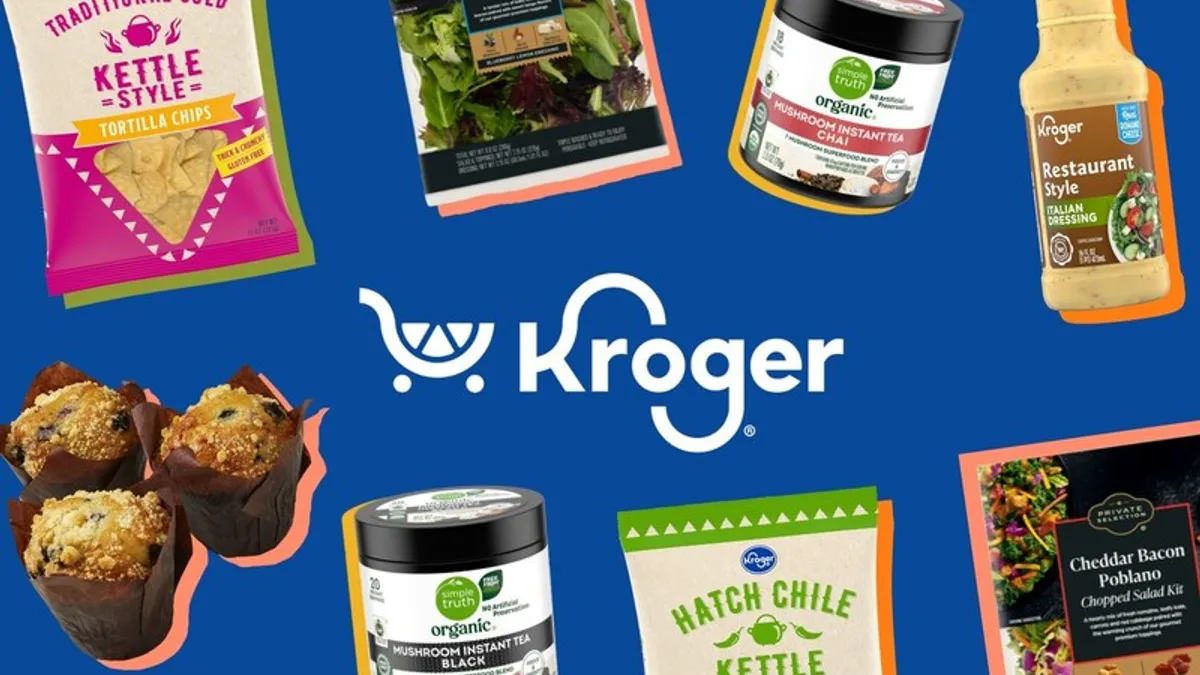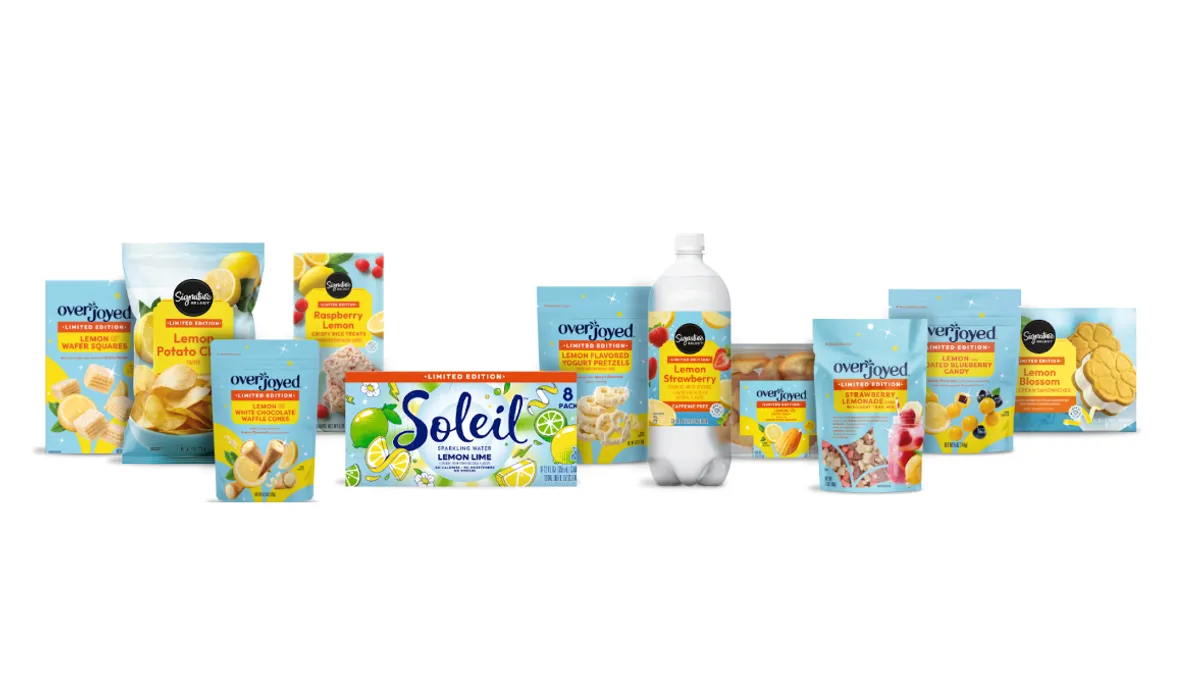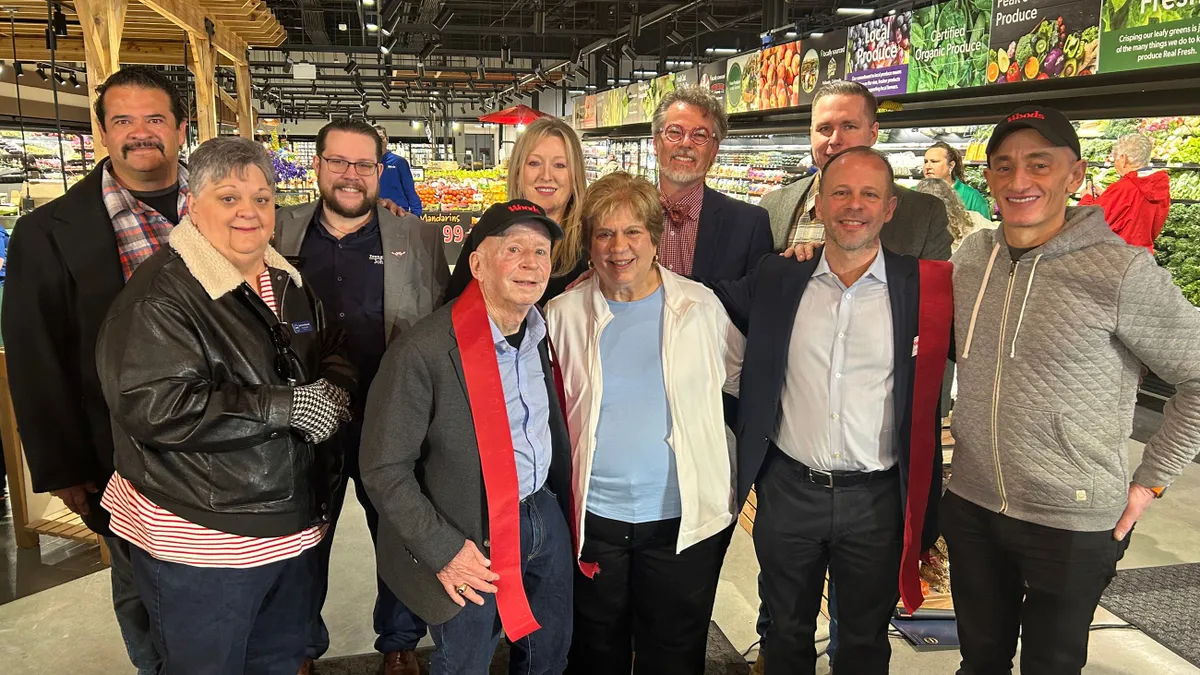From cans of tuna and beans to powdered milk and rice, center store sales have been sliding in recent years as consumers turn to the fresh perimeter in grocery stores. But COVID-19 quarantines and lockdowns have reversed that trend, with shoppers clearing out shelf-stable products in recent months.
Nielsen data sent to sister publication Food Dive showed exponential growth in these categories over the last nine weeks. Beans saw 82.1% growth, canned and pouch tuna jumped 75.6% and rice sales increased 84.5%, according to Nielsen figures.
"During the pandemic, consumers have begun to find comfort and a sense of safety in making sure they have enough food on hand," Melanie Zanoza Bartelme, global food analyst at Mintel, told Food Dive. "Shelf-stable goods like beans and tuna offer a long shelf life and will 'be there' when consumers need them."
But as sales spike for these categories, a big question remains: Will this just be a flash in the pan or a lasting trend when the pandemic subsides?
Company leaders and analysts told Food Dive that as shoppers rediscover recipes they like and find themselves cost cutting as they deal with economic challenges, these staple products could continue to see a sales boost and build brand loyalty in the long term.
A boost from canned to frozen
Cooking sections across various go-to foodie websites have featured more recipes with canned and frozen foods as consumers buy products that will last weeks and even months indoors. Company leaders say those recipes are helping consumers remember how useful these foods can be.
Joe Perez, senior vice president at Goya Foods, told Food Dive that sales have increased as consumers remember the "versatility and nutrition" from products like beans.
"There is an enormous movement back to basics," Perez said. "Center aisle products that were sort of being shunned have become comfort food and practical food."
Goya's website features hundreds of recipes and easy-to-follow instructions for how to use different kinds of beans in various recipes, he said. Perez said there are several reasons why Goya believes the sales momentum from the pandemic will last, including more people realizing the nutrition these products can deliver.
"People who may have shunned or walked past the center aisle, rediscovered it and realized that there are quality products within those aisles worth their time and effort," he said. "The other aspect, which is unfortunate, currently with so many people out of work, their budget is a bit tighter and canned beans are nutritious, healthy, economical and very versatile. You can make different menus every night without repeating the same bean or the same presentation."
He said most items in Goya's portfolio have seen a sales jump, including canned and dried beans, rice and condiments. "We believe we have expanded the consumer base," Perez said.
Mintel analyst Zanoza Bartelme said that beans have specifically seen more interest in flexitarian eating patterns even pre-COVID because "beans have been a nice bridge for consumers looking to ease their meat consumption but maintain their protein." She said it makes sense that beans would be top of mind in quarantine shopping.
But it's not just canned products. Sales in the frozen foods segment have skyrocketed with 70% of consumers increasing frozen food purchases since March, according to a recent survey from the American Frozen Food Institute.
The institute concluded that frozen food will continue to be in high demand even after the crisis subsides. Half of those who purchased frozen foods since the onset of the crisis say they will purchase a lot more (18%) or somewhat more (32%) in coming months.
Sean Connolly, CEO of Conagra, said on the company's most recent earnings call that although the situation is still changing, frozen is drawing in new consumers.
"The sharp increase in at-home eating occasions is generating trial among new consumers that we did not anticipate accessing," he said. "We view this dynamic as a long-term opportunity for our portfolio overall and in particular our leading frozen business."
Frances Zelazny, CMO at Signals Analytics, which has a COVID-19 resource center that tracks food trends, told Food Dive that frozen vegetables are now center plate because fresh produce may not be readily available or easily delivered during this time.
But she said even as people turn to different products, consumers still want tasty, flavorful and healthy options. "This is not the end of the world, people are not going to eat anything just because," she said.
However, Zelazny said that the crisis is still pushing forward trends that were already seeing increased demand previously. She said products that offer CBD, clean label, plant-based, superfood and vegan attributes will continue past the pandemic.
A tuna comeback?
Overall tuna consumption has dropped 42% over the last 30 years as younger consumers turn to products that don't require a can opener, according to USDA data in 2018.
But tuna sales are turning around and some brands are optimistic that this crisis will deliver a silver lining to the tuna industry well into the future.
Andy Mecs, VP of marketing and innovation at StarKist Co., told Food Dive that shelf stable tuna sales in the U.S. were up 146.5% compared to the previous year for the week ending March 14. He said it has been one of the highest growth categories across the entire store in recent weeks.
"As for the current environment, I believe that some of the consumer behavior will change permanently," Mecs said. "Consumers have been introduced to new types of foods with new types of packaging and are cooking more than usual out of necessity. Also, a record number of retailer apps have been downloaded as e-commerce has suddenly become much more prevalent with groceries. Some of these behaviors are likely to remain after the isolation ends."
"As for the current environment, I believe that some of the consumer behavior will change permanently."

Andy Mecs
VP of Innovation and Marketing, StarKist
Despite the decline in tuna consumption overtime, Mecs said it has actually increased since early 2017 as consumers gravitate toward no-drain tuna pouches. StarKist was the first company to sell pouch tuna at retail and has an 83% share.
The company is continuing to innovate as well. StarKist has launched dozens of varieties of tuna, chicken and salmon pouches over the past few years that have seen success with consumers.
Tuna giant Bumble Bee also struggled, filing for bankruptcy before it was sold to Taiwan-based FCF Fishery in January of this year. But now it is seeing renewed product interest.
Jan Tharp, president and CEO of Bumble Bee Foods, told Food Dive in an email that the company has ramped up its purchase of raw materials, added production days to factories, expanded its sourcing and narrowed its immediate focus on delivering the most in-demand products to market during this time.
"Our immediate focus is exclusively on meeting the needs of consumers in the weeks ahead as we all work through this challenging and uncertain time together," Tharp said. "When the time is right, we’ll get back to marketing a product line that we obviously believe brings a lot of value and benefits to an array of audiences."
Will these sales hikes last?
As the spread of coronavirus continues, analysts have remained confident that consumption of shelf-stable and frozen packaged foods will continue to temporarily increase, but the long-term impact is less certain.
A report from Bernstein predicted growth across these categories in the short term, but expressed more caution for the future. The analysts said at the time that they did "not expect any material impact on U.S. food companies' sales on a full-year basis at this stage."
Mintel analyst Zanoza Bartelme said that in times of anxiety, consumers seek comfort from their foods, and many turn to the dishes they enjoyed when they were young. She said these products, and ones like mac and cheese, are affordable and consumers already know what to expect from them.
That affordability will definitely drive consumers in today’s economic climate and as the country ventures into a downturn, "consumers will be looking for foods that feel low risk and a good value for their money," she said.
She said shoppers may look to private label or lower-cost options, but they could also be tempted to trade up on meal accompaniments like sauces, seasonings and condiments that ensure foods are "still tasty and exciting."
"As in the last recession, we could see manufacturers getting creative with smaller sizes or single-serve options that help consumers flavor their foods without busting their budgets," she said. "Some products and brands may be challenged to prove their value as consumers' wallets grow lighter."



